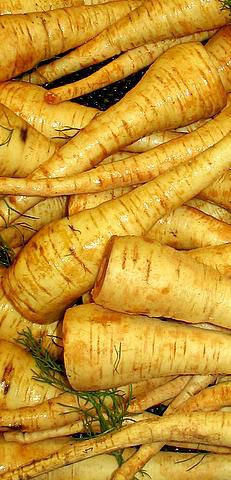-
 Cyclosilicates
Cyclosilicates
-
 Heat stability
Heat stability
-
 Mesozoic
Mesozoic
-
 RFT
RFT
-
 Synchronous
Synchronous
-
 OPMA
OPMA
-
 Hypertrophy
Hypertrophy
-
 CRC
CRC
-
 Oven
Oven
-
 Reduced substance
Reduced substance
-
 Homo
Homo
-
 Costal
Costal
-
 Acinar
Acinar
-
 Redox
Redox
-
 Verification
Verification
-
 Isaac Newton
Isaac Newton
-
 Flamsteed number
Flamsteed number
-
 Glinide
Glinide
-
 Declination
Declination
-
 H1 histamine antagonist
H1 histamine antagonist
-
 Piezoelectricity
Piezoelectricity
-
 Cytotoxic
Cytotoxic
-
 Equalisation
Equalisation
-
 Medulloblastoma
Medulloblastoma
-
 Recrystallisation
Recrystallisation
-
 Bigelow Aerospace
Bigelow Aerospace
-
 Temperate rainforest
Temperate rainforest
-
 Thoracic cavity
Thoracic cavity
-
 Ribonucleotide
Ribonucleotide
-
 Loop quantum gravity
Loop quantum gravity
Parsnip
Parsnip season
The parsnip, another of those forgotten vegetables, is harvested four months after it is sown from July to October.
Nutritional value of parsnips
With 75 kilocalories per 100 grammes, parsnips are a source of potassium and folic acid. Parsnips contain vitamins B, C, and E, and fibre.
Parsnip varieties
There are several varieties of parsnip, depending on their morphology:
- the round parsnip, about 15 centimetres in diameter;
- the demi-long parsnip, which has a shape similar to that of the carrot;
- the long parsnip, which grows up to 40 centimetres long.
Choosing and cooking parsnips
Parsnips must be firm, bulging and a creamy white colour, preferably of an average size: larger parsnips may be fibrous, while smaller parsnips dehydrate quickly.
Parsnips have a slightly sweet taste and are cooked in the same way as potatoes, which progressively replaced them.

The parsnip is a forgotten vegetable that looks like a carrot. © Licence Creative Commons
Latest
Fill out my online form.



